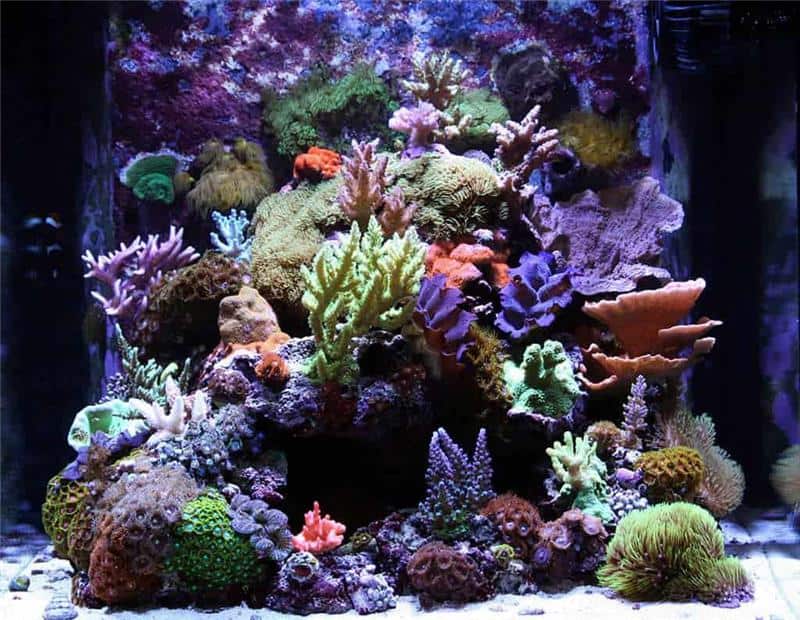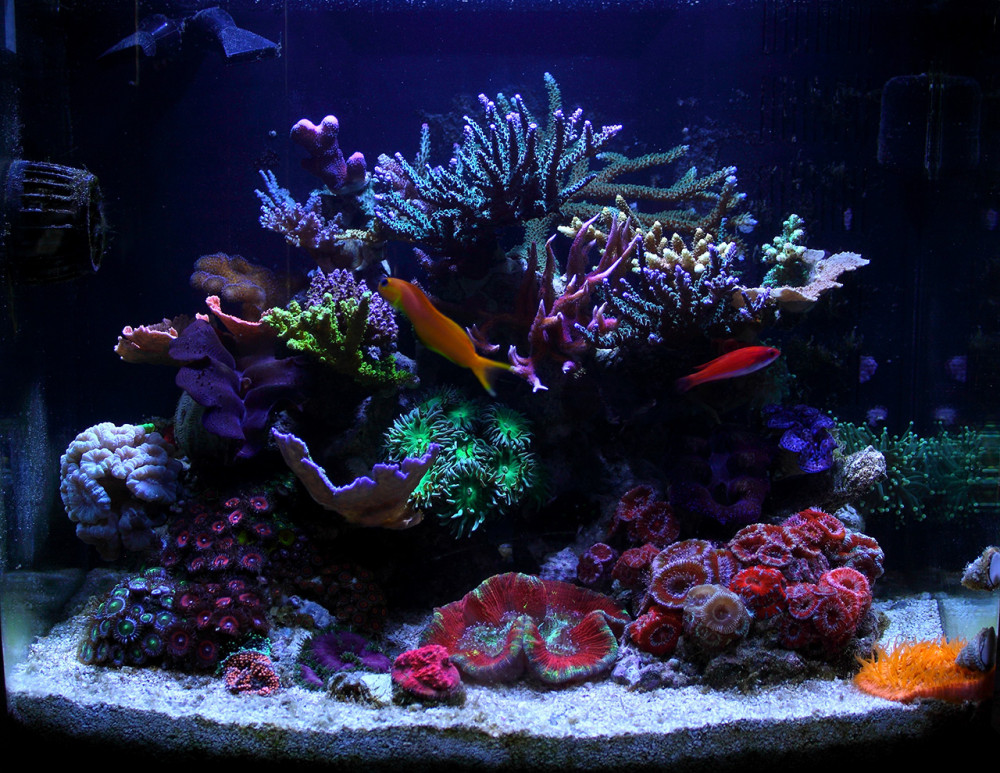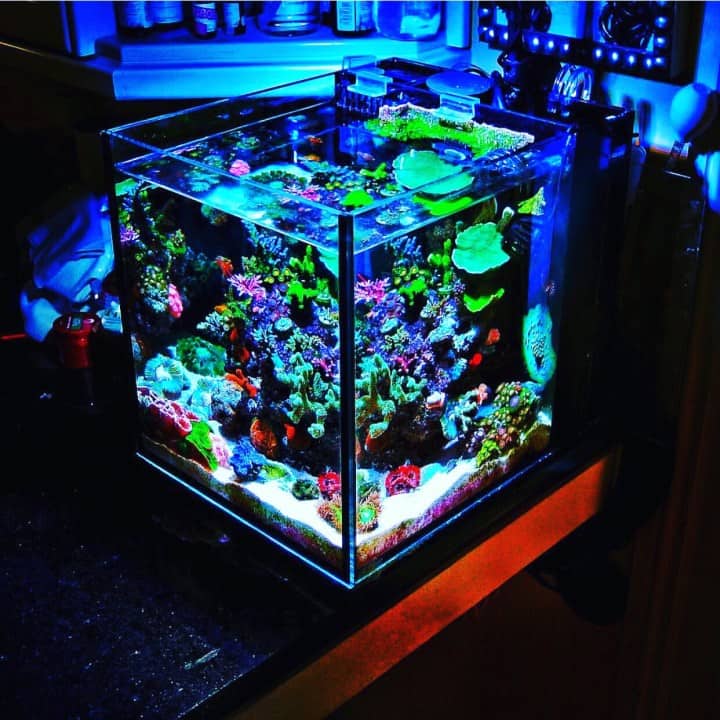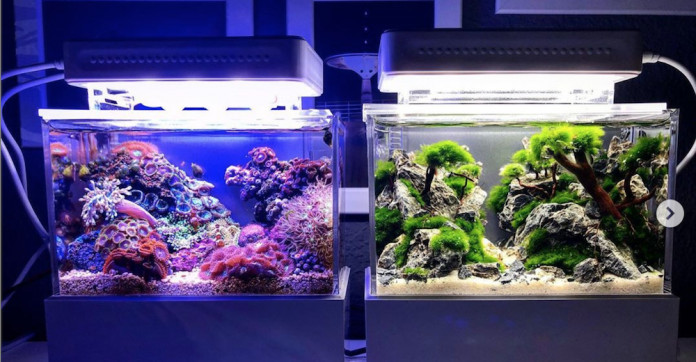Nano reef aquariums are smaller than the usual marine aquarium and can be difficult to keep healthy. However, they need less energy and less space to keep.
A nano reef tank is smaller than a traditional reef aquarium (which are usually called “mini reef” tanks, only because they are smaller than a natural reef). One definition requires nano reefs to be smaller than 55 gallons, but other people say they should be smaller than 30 or even 20 gallons.
A pico reef is generally considered to be a reef tank smaller than 5 gallons. People have successfully grown corals in half a gallon of water or less.
The Advantages of a Nano Reef

The most obvious advantage of a nano reef is its size. Reef aquarium beginners are often told to buy as big a tank as they can afford, and a traditional reef tank can be 100 gallons or more. Bigger tanks make it easier to keep water conditions stable.
A nano reef can potentially be as small as you need it to be, making it ideal for apartments, classrooms, and other areas with limited space. Another advantage of nano reefs is their portability (although no established reef should be moved without good reason).

A nano reef is also challenging, as it requires even more thought on composition than a traditional reef. Nano reefs don’t have the buffer of space, so the restrictions on what you can keep in them are much stronger. Thus, they require more planning and research to set up properly and succeed.
A nano reef may also be cheaper to keep than a traditional reef, although this is not always true. While smaller, a nano reef may need more watts of lighting per gallon, and may also need more equipment than a traditional tank, simply to keep the water conditions stable. However, the tank will be smaller and, the amount of live rock and sand will be smaller, and sometimes you can get away without any additional filtration, or even a sump, thus cutting down on costs. This also cuts down the risk of losing a huge financial investment to an untimely power outage.
The Disadvantages of a Nano Reef

Nano reefs have a reputation for being difficult to keep, and for good reason. The small size offers none of the potential buffer that a larger tank can provide. What might be gradual, diluted changes in a large tank can become urgent emergencies in a nano tank.
However, much of this difficulty comes when the nano tank is overloaded, and can be easily mitigated by either slightly under stocking the tank, or providing a large sump tank as a buffer.

The need for care in choosing tank inhabitants is another disadvantage of keeping a nano tank. The limited space means any aggressive or fast growing species have to be ruled out. In fact, fish are not recommended for pico tanks at all, as they can easily upset the water quality in a tiny tank. Any species that live on live food such as amphipods, will quickly run out of food in a smaller aquarium. The amount of space also means that you can’t add different kinds of tank inhabitants after the tank has been set up, simply because there will be nowhere to put them.
A nano reef tank needs a lot of research before being set up. It can be cheaper and easier to keep, but in return it is a much more limited and vulnerable system which requires dedicated care. A nano tank is not something you should take lightly, but can be a beautiful addition to your home and a fascinating hobby.


















